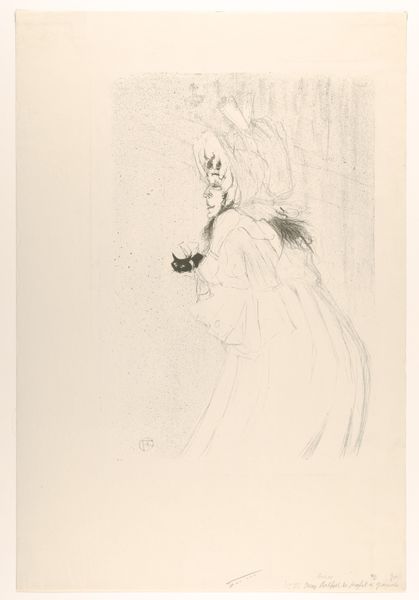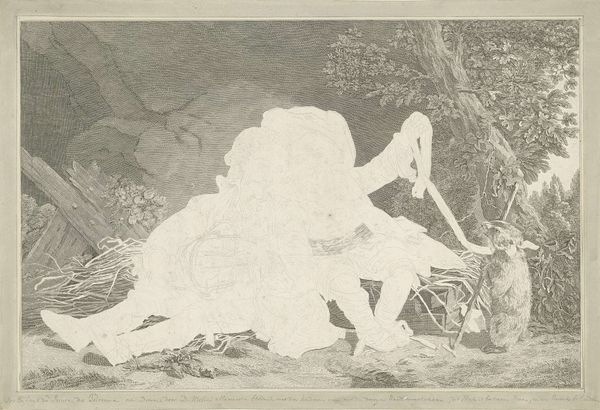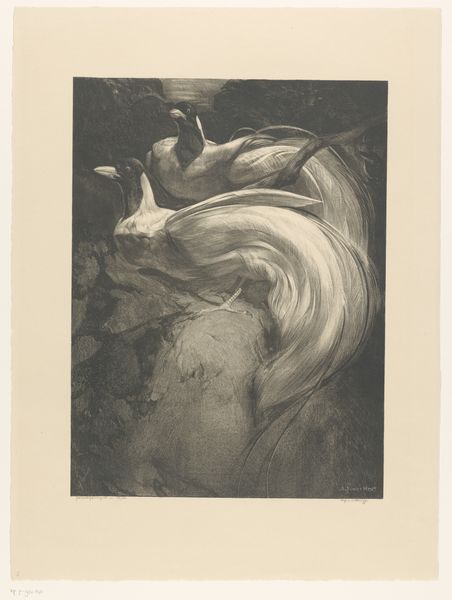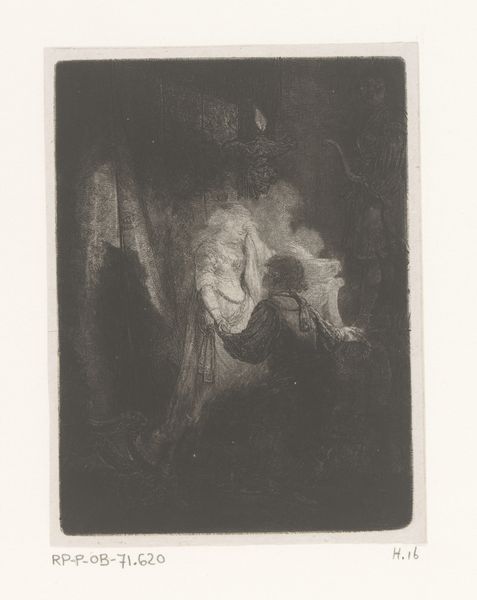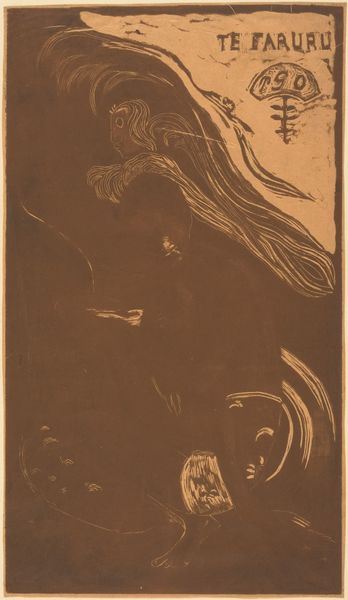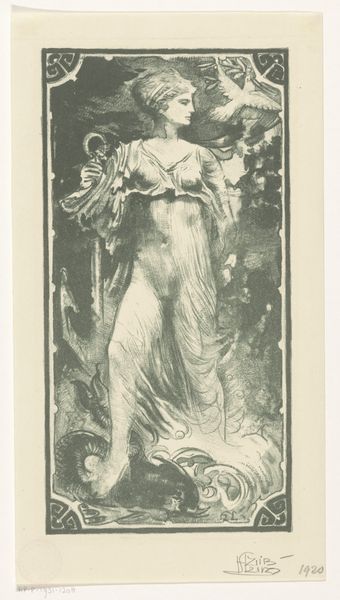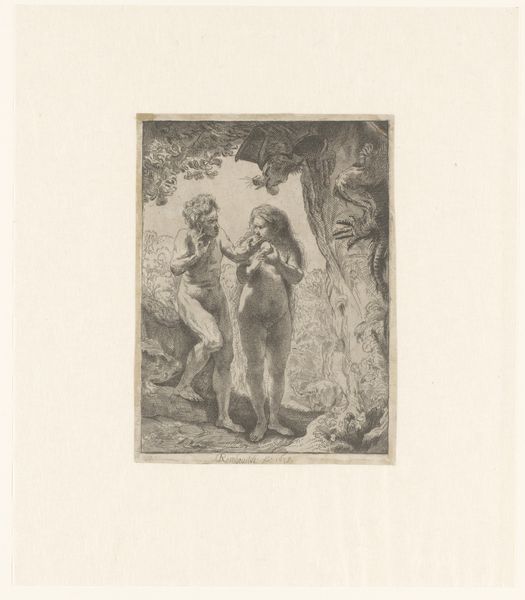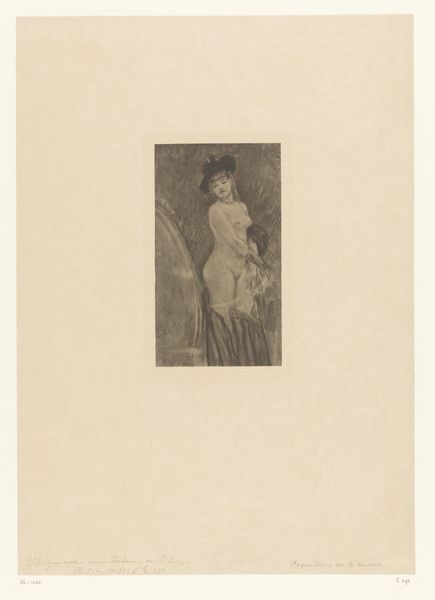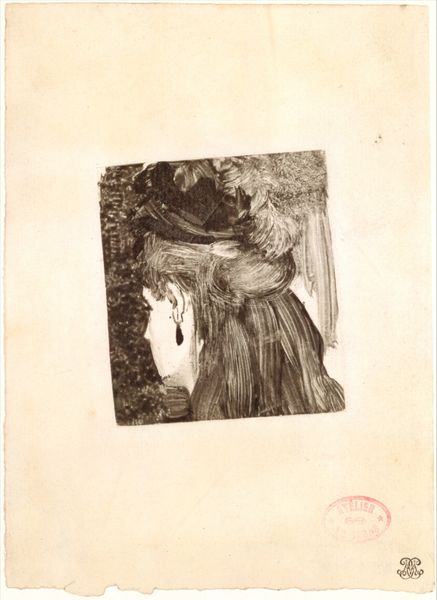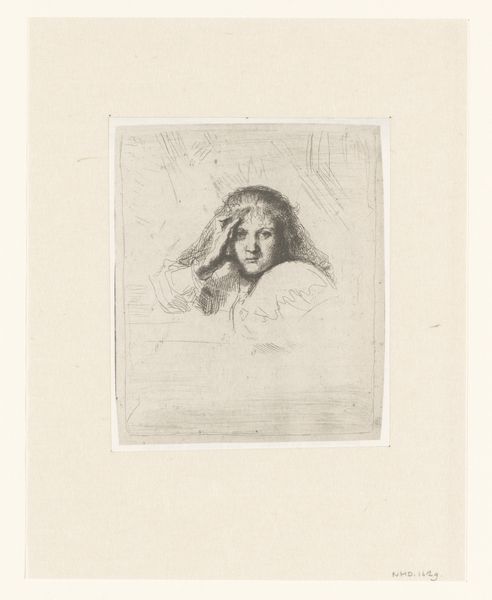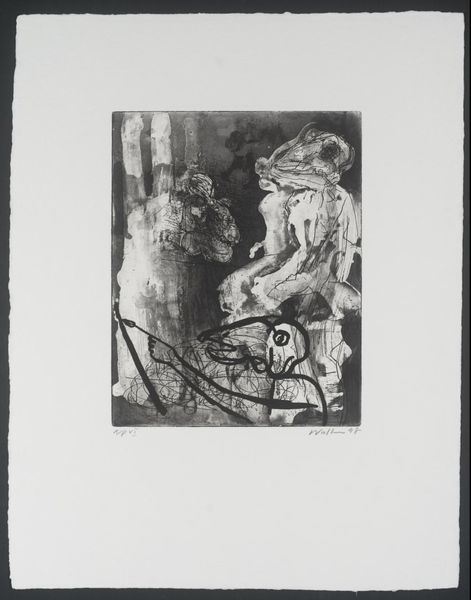
print, etching
# print
#
etching
#
landscape
#
figuration
#
symbolism
#
monochrome
Dimensions: height 462 mm, width 331 mm
Copyright: Rijks Museum: Open Domain
Curator: Georges de Feure created this print, an etching, in 1894. Its title is "Illustratie bij het toneelstuk La Princesse Maleine," which translates to "Illustration for the play Princess Maleine." It resides here at the Rijksmuseum. Editor: My initial impression is one of foreboding. The stark contrast, the way the figures emerge from the darkness – it suggests a world of secrets and hidden dangers. Curator: Symbolism definitely pervades this work. Look at the way the princess figure glows; it sets her apart, almost saintly, contrasting with the more shadowed male figure lurking behind. Editor: Indeed. Light and darkness are age-old visual metaphors. The radiant princess, seemingly illuminated from within, perhaps symbolizes innocence or purity, while the man concealed in shadow hints at something more sinister, potentially deceit or impending doom. And that single string in her hand? Curator: It adds to the tension. Considering de Feure's milieu in the decorative arts, how might this print speak to anxieties around gendered labor and production at the time? This ethereal princess, surrounded by suggestive gloom, is she trapped? How do such fin-de-siècle images grapple with the changing status and perceived threats surrounding femininity in an industrializing Europe? Editor: Fascinating. I see the composition in relation to the narrative—Maurice Maeterlinck's play, full of death and doomed love. Maleine herself becomes a recurrent figure of abused innocence in symbolist imagery. This single etching seems to pull together common themes found in the Symbolist movement--dark landscapes with looming figures, a prevailing sense of fatalism. It all echoes a cultural obsession with psychological states and internal dramas made manifest through recognizable archetypes. Curator: What’s particularly intriguing to me is the interplay of line work—the dense hatching creating deep shadows versus the almost non-existent rendering of the princess's form. It accentuates her vulnerability, almost as though she is in the process of disappearing before our eyes! Editor: A potent reminder that imagery holds power—cultural power, emotional power—and understanding the visual vocabulary unlocks layers of meaning across different periods. Curator: Exactly, and by looking closely at these choices in production, and connecting that with other Symbolist tendencies, it offers a small window into how artists were picturing not just narratives, but negotiating the cultural and economic shifts around them.
Comments
No comments
Be the first to comment and join the conversation on the ultimate creative platform.
